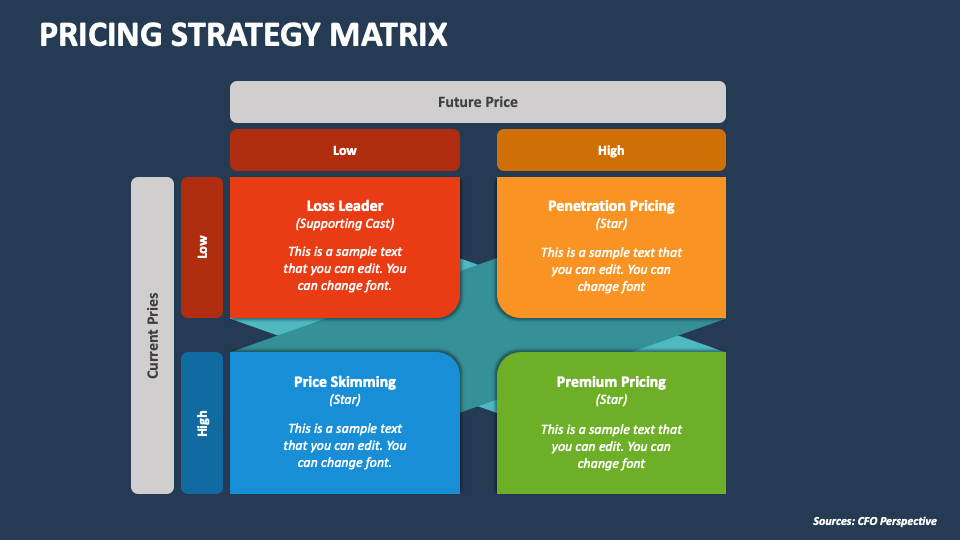The Function of Competitive Analysis in Shaping Your Pricing Strategy
The Function of Competitive Analysis in Shaping Your Pricing Strategy
Blog Article

Master Effective Rates Strategies to Take Full Advantage Of Revenue
In the ever-evolving landscape of business, grasping effective rates approaches is necessary for services aiming to take full advantage of earnings. A nuanced understanding of prices psychology can dramatically influence client actions and getting decisions.
Recognizing Pricing Psychology
Comprehending prices psychology is critical for services aiming to enhance their rates methods. This area takes a look at how consumers regard rates and how these perceptions influence their acquiring decisions. Trick concepts in rates psychology include the anchoring result, where the first cost presented acts as a reference point for consumers, and the principle of rate level of sensitivity, which differs among different customer sections.
Additionally, organizations can leverage the notion of perceived worth, where the regarded benefits of a product and services can validate a greater cost factor. For example, premium rates can develop a mood of exclusivity, bring in customers who link higher prices with premium quality. On the various other hand, emotional pricing, such as setting a price at $9.99 rather than $10, can considerably influence consumer habits by making costs show up more appealing.
Furthermore, deficiency and seriousness can boost the perceived value of items, prompting quicker getting choices. Understanding these emotional triggers allows companies to formulate pricing strategies that not only drive sales but additionally foster client loyalty. Therefore, understanding pricing psychology is important for reliable rates method formulation, bring about improved profitability and market positioning.
Applying Value-Based Prices

First, conduct comprehensive marketing research to recognize the worth vehicle drivers for your target audience. This can include attributes, top quality, brand name reputation, and customer care. Next off, sector your clients based upon their determination to pay and the value they regard. By doing so, you can tailor offerings and rates approaches to straighten with various sectors.
After collecting insights, set rates that mirror the optimum amount a customer wants to pay, making sure that they perceive a fair exchange for the worth received. Connect the worth recommendation properly, highlighting the advantages and differentiators of your offering. Constantly keep track of market problems and client responses to fine-tune your pricing strategy over time. By executing value-based rates, organizations can boost earnings while fostering long-term consumer loyalty.
Discovering Dynamic Rates Designs
In today's quickly altering market landscape, vibrant rates designs have become an effective technique for services looking for to optimize earnings and respond to fluctuations in need. These models allow firms to change their rates in real-time based on numerous factors such as customer habits, market trends, and stock levels. By leveraging information analytics and algorithms, companies can determine optimal prices factors that maximize sales while staying affordable.
Dynamic rates can take numerous forms, consisting of time-based prices, where prices change based upon time of day or season, and demand-based rates, which readjusts rates according to present customer need. This adaptability not just improves earnings but additionally improves client contentment by providing rates that show real-time market problems.
Carrying out vibrant prices needs a robust technological framework and a deep understanding of customer segments. It is critical for businesses to check market signals and consumer reactions constantly, making sure that prices strategies align with broader service purposes. Moreover, transparent interaction regarding pricing modifications can assist reduce consumer frustration and foster depend on, ultimately resulting in continual profitability in a competitive market. Embracing dynamic rates can therefore be a transformative technique click to find out more in the mission for making best use of income.
Studying Competitor Pricing
Monitoring competitor prices is vital for businesses aiming to maintain an affordable edge in their respective markets. By examining competitors' prices strategies, firms can determine market patterns, understand customer preferences, and readjust their pricing as necessary. This evaluation involves event data on rivals' costs, promotional techniques, and product offerings to notify pricing decisions.
To properly assess rival prices, organizations ought to use numerous devices and techniques, such as price monitoring software, market research reports, and customer feedback. This data can reveal just how rivals place their product or services, allowing companies to separate their offerings or take on similar approaches to stay relevant.
In addition, it is essential to categorize rivals into indirect and direct competitors. Straight rivals offer comparable products or services, while indirect competitors might satisfy the exact same customer demand with go to the website different solutions. Comprehending the subtleties between these groups will certainly allow companies to tailor their prices strategies extra efficiently.
Ultimately, recurring competitor pricing analysis is vital for making enlightened prices decisions. It enables companies to stay agile in reaction to market changes, ensuring they can confiscate chances and mitigate dangers connected with prices techniques.
Assessing Pricing Performance
Comprehending how competitor prices affects market dynamics leads to an all-natural emphasis on assessing pricing performance within one's own organization. This analysis is important for recognizing locations of stamina and chances for renovation, inevitably enhancing profitability.
Additionally, performing regular rates audits can reveal disparities in between expected and real efficiency. This entails comparing prices data across various sections and channels to comprehend differences and recognize patterns. In addition, integrating consumer responses can give understandings into viewed value versus actual rates, making sure positioning with market expectations.
Finally, leveraging data analytics tools can facilitate much deeper understandings right into rates efficiency, making it possible for organizations to make data-driven adjustments (Pricing Strategy). By continually reviewing prices efficiency, organizations can site here adjust to market adjustments and maximize their approaches, ensuring sustained earnings in a competitive landscape
Final Thought
By leveraging prices psychology, companies can improve perceived worth and dressmaker prices to diverse client sectors. The adoption of value-based and vibrant rates designs promotes real-time adjustments based on need and client desire to pay.
Understanding rates psychology is crucial for services aiming to enhance their rates strategies. Recognizing these psychological triggers makes it possible for companies to develop pricing strategies that not just drive sales but additionally foster client loyalty. Hence, understanding pricing psychology is crucial for effective prices technique solution, leading to improved success and market positioning.
By evaluating competitors' rates approaches, companies can identify market fads, understand consumer choices, and readjust their rates appropriately. By leveraging rates psychology, businesses can improve perceived worth and dressmaker prices to varied customer sectors.
Report this page